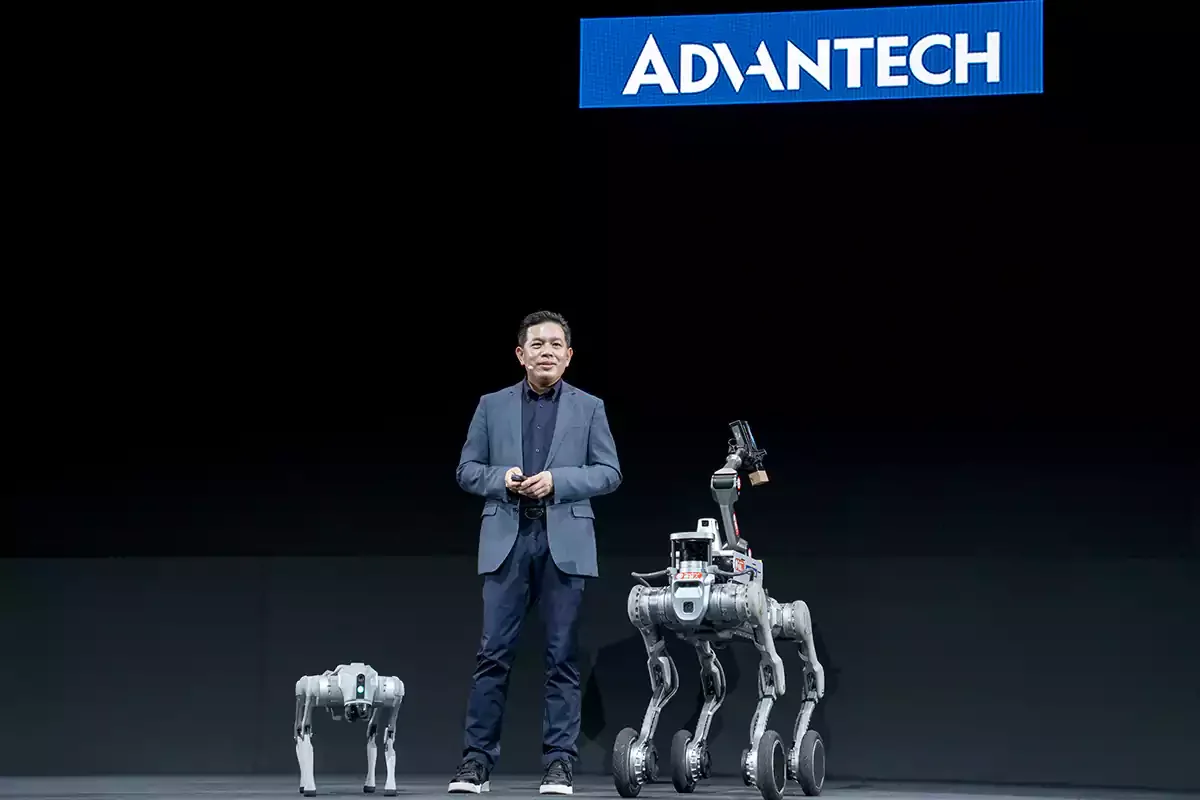Edge AI in Robotics: What Actually Ships
Miller Chang from Advantech talks about Edge AI-powered robotics, at the COMPUTEX forum in May 2025. To develop their robotic suite, Advantech partnered with NVIDIA, Intel, and Qualcomm.
Credit: Advantech/COMPUTEX
Moving perception and planning to the robot—without courting fragility
“Edge AI” in robotics is now less an aspiration than a procurement question: which stacks are stable enough to deploy and support at scale? The answer lies in matching hardware platforms that are actually supported in the field with middleware that operations teams can live with.
On the hardware side, the two most common lanes are NVIDIA’s Jetson family and Intel-centric deployments using OpenVINO. Jetson bundles GPU-accelerated inference with the JetPack SDK and a deep ecosystem aimed at robotics; OpenVINO optimises models across CPU, iGPU and other accelerators, making it attractive where standard industrial PCs dominate. The right choice is less about benchmarks and more about the support chain your integrator can depend on for years.
On the software side, ROS 2’s DDS-based middleware has matured into the default for many teams, giving robust discovery and QoS controls. That matters when you have to keep multi-sensor, multi-node systems stable on real networks with jitter and packet loss. The operational win is being able to treat perception and control graphs as configurable infrastructure, not bespoke art.
The risk, of course, is drift: models that work in the lab can fail at the edge when lighting, packaging and human behaviour shift. Buyers will ask how you manage model updates in safety-regulated environments, and European buyers will increasingly ask how your AI governance maps to the AI Act’s phased obligations. Framing your process against a recognised governance baseline (NIST’s AI RMF in the US, EU guidance in Europe) reduces friction in those conversations.
GTM logic is therefore about reliability narratives, not just performance demos or presentations. Vendors who can show their safe-update pipeline, their rollback stories, and their telemetry—what they watch, what they fix—are getting the purchase orders. Edge AI wins when it becomes boring: when a unit performs under real-world variance and the vendor can prove why.
